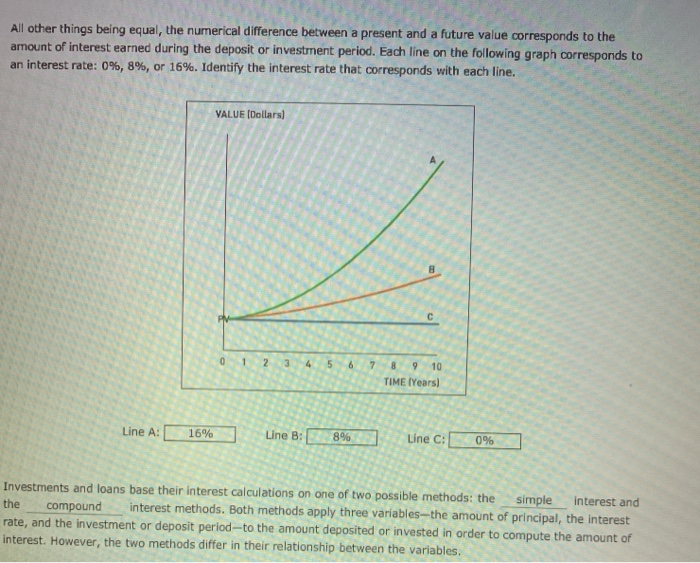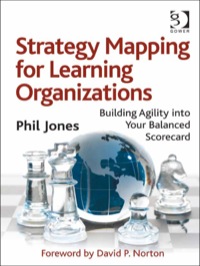All other things being equal, the numerical difference between a present and a future value corresponds to the amount of interest earned during the deposit or investment period. Each line on the following graph corresponds to an interest rate: 0%, 8%, or 16%. Identify the interest rate that corresponds with each line. VALUE (Dollars) 1 2 3 4 5 6 7 TIME (Years) Line : 16% Line B: 8% Line C: 0% Investments and loans base their interest calculations on one of two possible methods: the simple interest and the compound interest methods. Both methods apply three variables-the amount of principal, the interest rate, and the investment or deposit period -to the amount deposited or invested in order to compute the amount of interest. However, the two methods differ in their relationship between the variables. Assume that the variables I, N, and PV represent the interest rate, investment or deposit period, and present value of the amount deposited or invested, respectively. Which equation best represents the calculation of a future value (FV) using: Compound interest? Simple interest? FV-PVX (1+) O FV = (1 +1)N / PV OFV = PV / (1+1) O FV = PV / (1 x I x N) FV = PV + (PV XI X N) O FV = PV - (PV XI X N) Identify whether the following statements about the simple and compound interest methods are true or false. True False Statement The process of earning simple interest does not allow a depositor or investor to earn interest on any previously earned interest. Everything else held constant, an account that earns compound interest will grow more quickly than an otherwise identical account that eams simple interest. After the end of the second year and all other factors remaining equal, a future value based on compound interest will exceed a future value based on simple interest. Mary is willing to invest $30,000 for eight years, and is an economically rational investor. She has identified three investment alternatives (L, M, and P) that vary in their method of calculating interest and in the annual interest rate offered. Since she can only make one investment during the eight-year investment period, complete the following table and indicate whether Mary should invest in each of the investments. Note: When calculating each investment's future value, assume that all interest is earned annually. The final value should be rounded to the nearest whole dollar. Mary is willing to invest $30,000 for eight years, and is an economically rational investor. She has identified three investment alternatives (L, M, and P) that vary in their method of calculating interest and in the annual interest rate offered. Since she can only make one investment during the eight-year investment period, complete the following table and indicate whether Mary should invest in each of the investments. Note: When calculating each investment's future value, assume that all interest is earned annually. The final value should be rounded to the nearest whole dollar. Make this investment? Yes No Expected Future Value Investment Interest Rate and Method 7% compound interest 6% simple interest 11% compound interest









